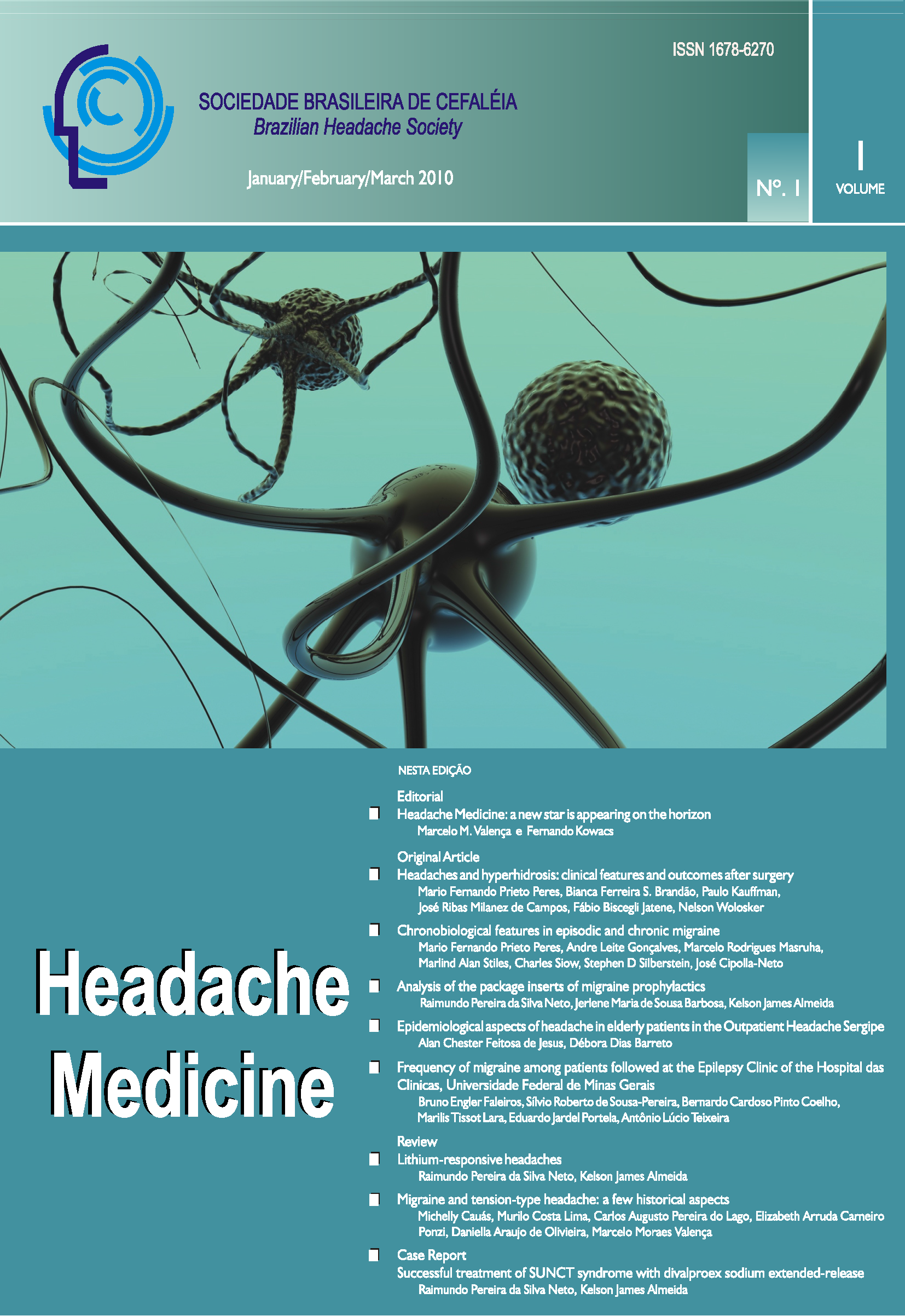Analysis of the package inserts of migraine prophylactics
Views: 429DOI:
https://doi.org/10.48208/HeadacheMed.2010.4Keywords:
Package inserts, headache, migraine prophylaxisAbstract
Introduction: The use of migraine prophylactics is based on clinical evidence and the personal experience of those who prescribe them. Medicines commonly indicated for other diseases are used and they do not have any recommendation for preventing migraines on their package inserts. Objective: Analyzing the indication on the package inserts of the medicines recommended for migraine prophylaxis. Material and Method: Fifty-two package inserts of medicines used in migraine prophylaxis from different commercial applications were analyzed. The medicines belonged to five pharmacological groups, which were: beta blockers; tricyclic
antidepressants; calcium channel blockers; serotonin antagonists and antiepileptics. The classification of these groups was done according to the consensus of the Brazilian Headache Society for migraine prophylactic treatment. Results: The fiftytwo package inserts were distributed into the following pharmacological groups: twenty-three (44.2%) belonged to beta blockers; seven (13.5%) were tricyclic antidepressants; six (11.5%) were calcium channel blockers; two (3.9%) were serotonin antagonists and fourteen (26.9%) were antiepileptics. Twenty-seven (51.9%) package inserts did not say "indicated for migraine prophylactic treatment". In the tricyclic antidepressants group and in all valproic acid and gabapentin commercial applications there was no indication on the
package insert. However, in all the propranolol, serotonin antagonists and topiramate package inserts this information was present. Conclusion: The inexistence of an explicit indication on the package insert for treating migraines has led many patients to abandon the treatment.
Downloads
Published
How to Cite
Issue
Section
License
Copyright (c) 2010 Headache Medicine

This work is licensed under a Creative Commons Attribution 4.0 International License.












